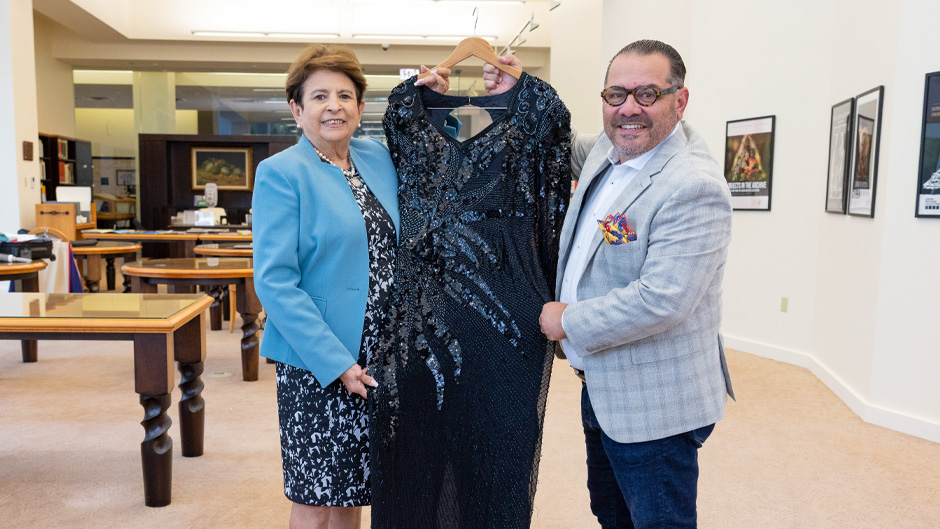She was called the Queen of Salsa.
Others called her Celia de Cuba.
The exuberant shout “Azucar!” was her trademark.
Celia Cruz, the Cuban-born singer, whose joie de vivre and prodigious voice made her into one of the most popular artists in the 20th century, died in 2003 but her legacy lives.
“Celia was Cuba out of Cuba,” said Omer Pardillo, her former publicist and manager. “Whenever you saw Celia Cruz on a stage somewhere in the world, you saw Cuba. You did not have to go to Cuba because she was Cuba. She embraced everything that Cubans were and are.”
Besides her voice, Cruz was known for her magnificent outfits, wedged shoes, and colorful wigs. She took great pride in her appearance, he said.
Last month, Pardillo donated one of her iconic dresses to the University of Miami Libraries’ Cuban Heritage Collection. Cruz wore the long-sleeved, black, silk, beaded gown on several occasions, including at a 1999 London music festival. Pardillo has donated several other dresses to museums around the word including the Smithsonian in Washington, D.C.
“We are honored to receive this important gift, a piece of material culture that embodies the visual legacy of Celia's iconic musical career,” said Amanda Moreno, interim Esperanza Bravo de Varona Chair and director of the Cuban Heritage Collection. “This example of fashion history will be made available to our students and the local community, so that they can study and appreciate the artist's style, complementing additional materials we have related to Celia's professional accomplishments.”
The dress joins a medley of objects that constitutes the Celia Cruz Collection. These include one of her famed shoes, a fan, videos, and pictures, including some taken during the 1999 University of Miami Commencement ceremony, when she received an honorary doctorate. The collection also has dozens of books on her life and legacy.
The acclaimed singer will be honored next year as the first Afro-Latina woman to appear on a U.S. 25-cent coin as part of the U.S. Mint Initiative American Women Quarters Program, which portrays prominent women throughout history.
During his visit to the Cuban Heritage Collection, Pardillo spent part of the day being interviewed on camera in the gallery of the Roberto C. Goizueta Pavilion for an upcoming Univision series called “Univisionarios,” which will highlight Cruz’s life and legacy. The shows will air in July, which will mark the 20th anniversary of her death.
Pardillo worked with Cruz for 11 years, and she often referred to him as her son. “I felt so honored every time she said that,” Pardillo admitted.
As executor of her estate, Pardillo inherited all of the singer’s archives, including her contracts, newspaper clippings, letters, and concert programs—along with thousands of her dresses, shoes, and wigs.
He decided to donate the dress to the Cuban Heritage Collection as a promise he made to the late director and chair, Esperanza Bravo de Varona.
“A long time ago when Esperanza de Varona was alive, we had a conversation and I knew the CHC collects paper documents and they do not accept many clothes,” he said. “But she said if it is from Celia, we will accept it. “
Pardillo said he knows the dress is now in a very special home because “this place keeps everything of importance to Cuban exiles. It will also be part of the Cuban history for generations to come.”

